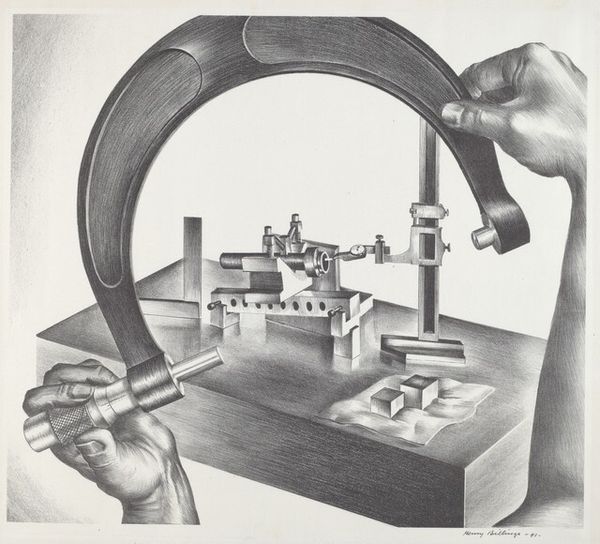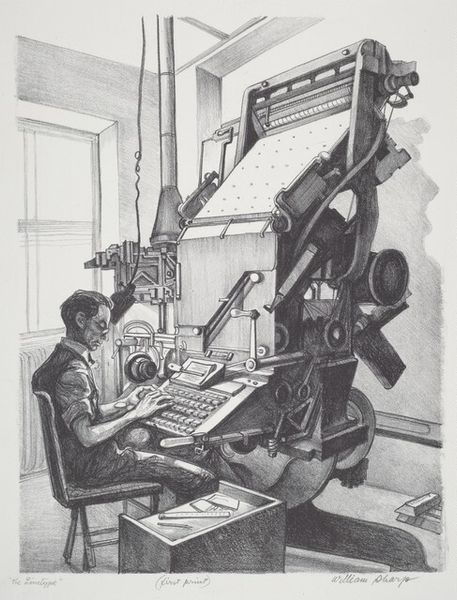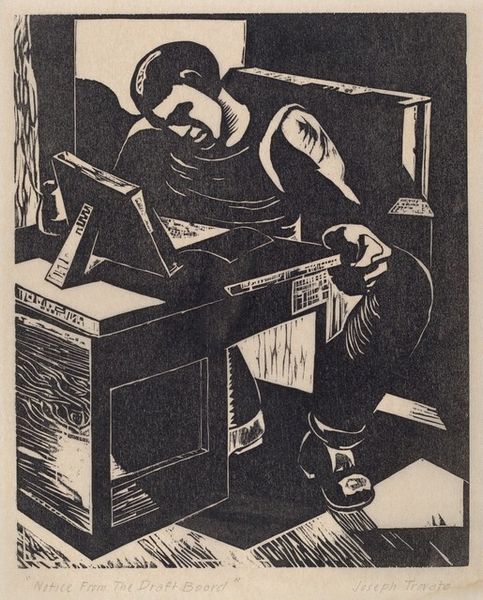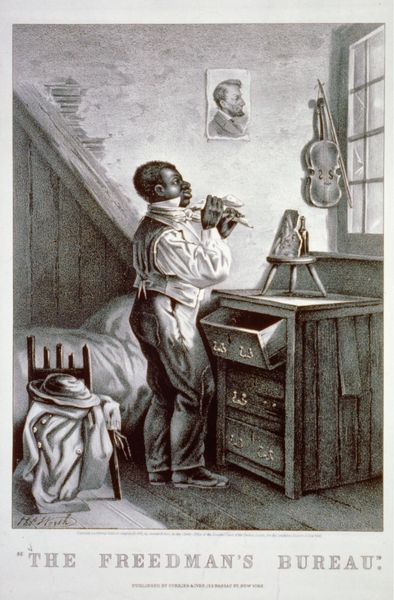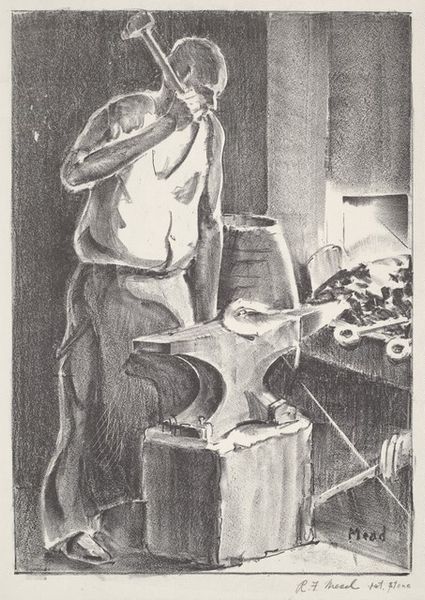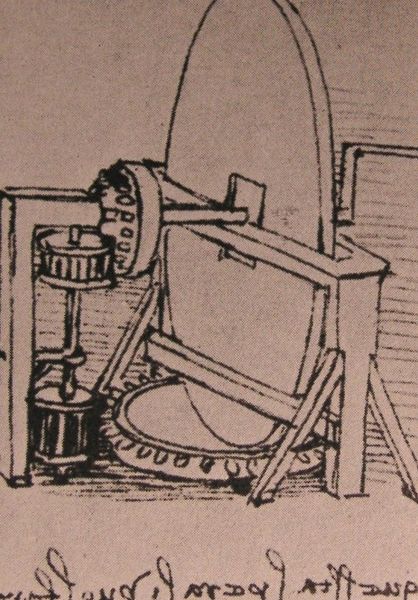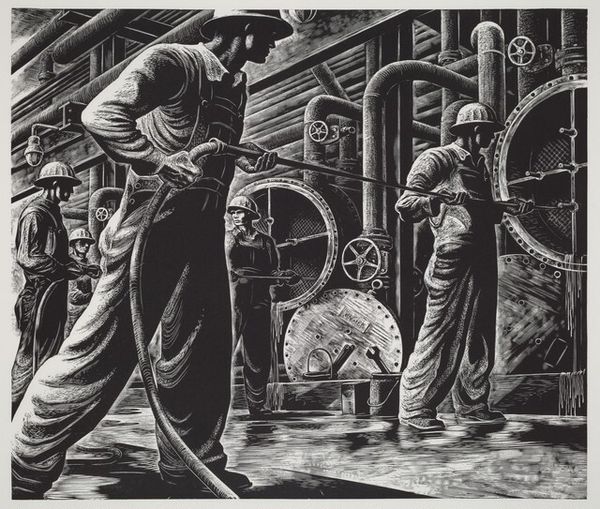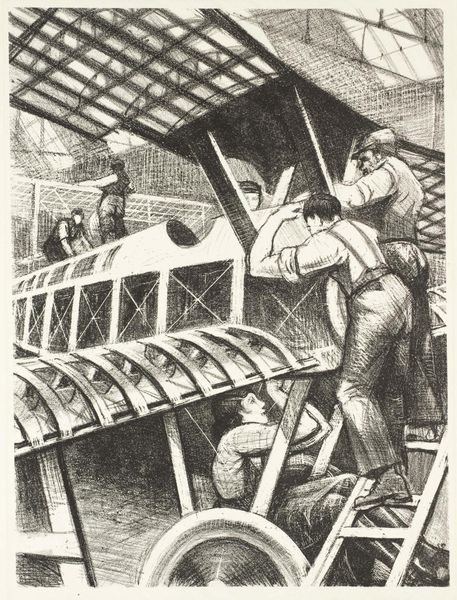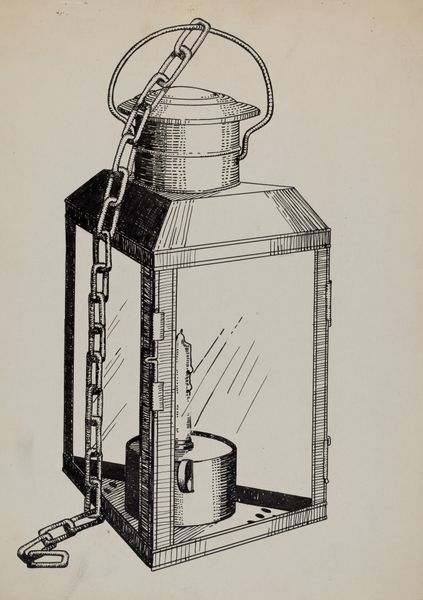
drawing, print, pencil, graphite
#
portrait
#
drawing
# print
#
caricature
#
pencil drawing
#
pencil
#
surrealism
#
graphite
#
portrait drawing
#
genre-painting
#
modernism
#
realism
Dimensions: image: 284 x 235 mm paper: 406 x 301 mm
Copyright: National Gallery of Art: CC0 1.0
Editor: This drawing from 1951, titled "The Stereotype" by William Sharp, is a print made with pencil and graphite. The scene feels very industrial; the mood is somber and highlights the monotony of labor. What is your read of the piece? Curator: For me, this drawing foregrounds the means of production itself. Note how Sharp emphasizes the printing press, almost anthropomorphizing the machine. Consider, too, the artist’s hand meticulously rendering each bolt, dial, and lever, highlighting not just the process but also the skill involved. The choice of graphite as the primary medium underscores the laborious process. What kind of cultural message do you think the artist delivers by focusing on the machine and its operator? Editor: Maybe that humans are becoming extensions of machines? Or perhaps it reflects the post-war focus on industrialization, and the labor behind the products? Curator: Precisely. The almost clinical depiction of the worker, alongside the monumental printing press, suggests the worker is an interchangeable cog in the larger machinery of production. How do you see that playing out with the print medium chosen? Editor: Because the subject of the drawing is printmaking? Maybe he is trying to speak to the cyclical reproduction that machines allow by making it a printed piece of art? Curator: Exactly. It is both the image, its medium, and subject matter playing with that very process, questioning the distinction between manual craft and mechanized production. Do you think there's a critical or celebratory attitude toward labor depicted in this picture? Editor: I initially saw it as critical but recognizing the level of work to create the artwork itself perhaps it holds reverence? Curator: Indeed. By engaging with the material reality of printmaking, "The Stereotype" transcends mere representation, becoming a commentary on the changing landscape of labor and artistic practice in the modern era.
Comments
No comments
Be the first to comment and join the conversation on the ultimate creative platform.
